
Mint Kremnica |
  |
|
Gate into the Virtual Kremnica Map |
|
Diploma thesis Homepage of author |
 | ||
|
GPS: 48.7051° N, 18.9164° E
You can visit exposition "Minting room in changes of time" and coin shop "Mincart". History | ||
 | ||
|
History | ||
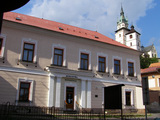 | 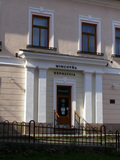 | 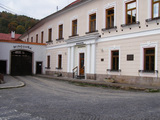 |
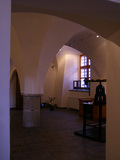 | 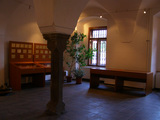 | 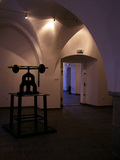 |
|
The Kremnica Mint is one of the oldest almost continuously manufacturing enterprises worldwide. For 680 years it has been manufacturing coins and medals. The mint was founded in a mining community Cremnychbana, situated in the mountains of the central Slovakia in 1328 and probably even a bit earlier. Experts from Kutná Hora were called here, also with minters from Italy. In employ of Hungarian king Charles Robert of Anjou, they started manufacturing coins that became popular and much-sought-for means of payment some years later not only in Hungary, but also abroad.
Kremnica coins and especially ducats played an important role in the economic development of Europe. In the 14th century, the Kremnica Mint was producing from 250.000 to 500.000 ducats per year. Unfortunately, the biggest part of this output disappeared abroad. Kremnica gold coins due to their unchanged standard and weight in the course of hundreds of years served as a reliable and permanent scale of values and formed a constituent part of the capital of the European wholesale trade. In the 14th century, the Kremnica mint was undoubtedly one of the most productive mints in Europe and probably held the first place in the coinage of gold coins.
In the 15th century, the town of Kremnica was given the right of controlling the quality of gold coins and probably also the quality of silver coins as well. The coins were minted manually in the Kremnica mint up to the beginning of the second half of the 17th century. The periods of stagnation alternated with periods of expansion. The production of the Kremnica mint presented a considerable fluctuation resulting from the unevenness of the precious metals production in the Central Slovakia.
The Kremnica mint was a very important part in the system of Habsburg financial policy. After the World War I. only empty buildings remained of the Mint. All the equipment and precious metal stock were carried away into Budapest. That is why a new Czechoslovak state was lacking a mint in the first years of its existence. Mainly due to the effort of the workers, the mint was brought into such an order that in 1921 first Czechoslovak coins could have been minted.
The World War II. made Kremnica one of the most destroyed towns in Slovakia. The mint was also hit with serious damage. A retreating squad of German soldiers used explosives to destroy all the Mint's equipment. In the last decades, various reconstructions and modernizations took place. The mint went through multiple rebuilds and implemented new technologies. The newest part of the historical building is euro coins mint, which now produces coins at its maximum capacity. From 2006, an exposition of minting technology Minting room in changes of time is available to visitors.
According to book Kremnická mincovňa 1328 - 1978
and official website of the Kremnica mint |
||
 | ||
last update: 14.04.2024
© ED 2006 - 2009

![Validate my RSS feed [Valid RSS]](../../images/valid-rss.png)